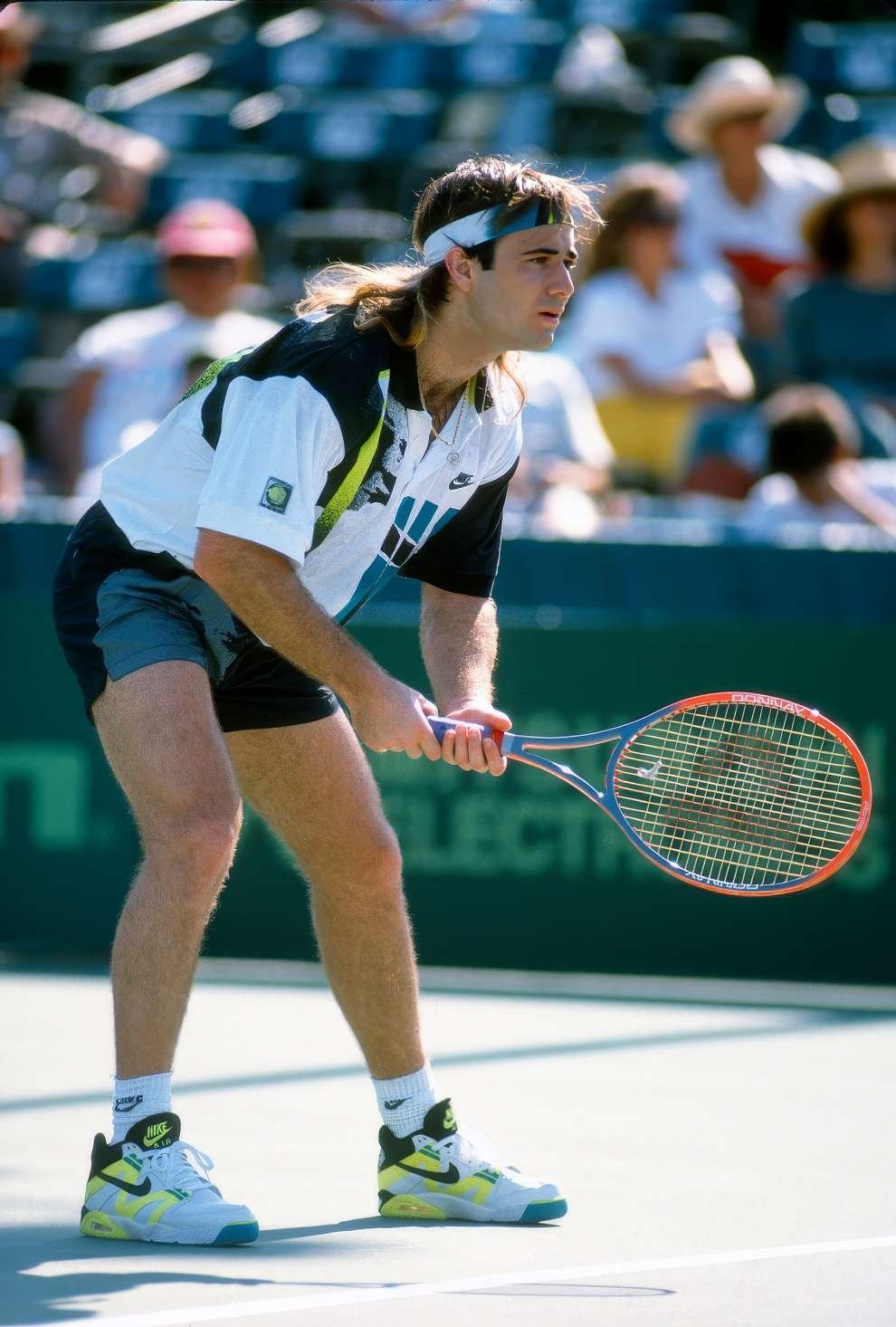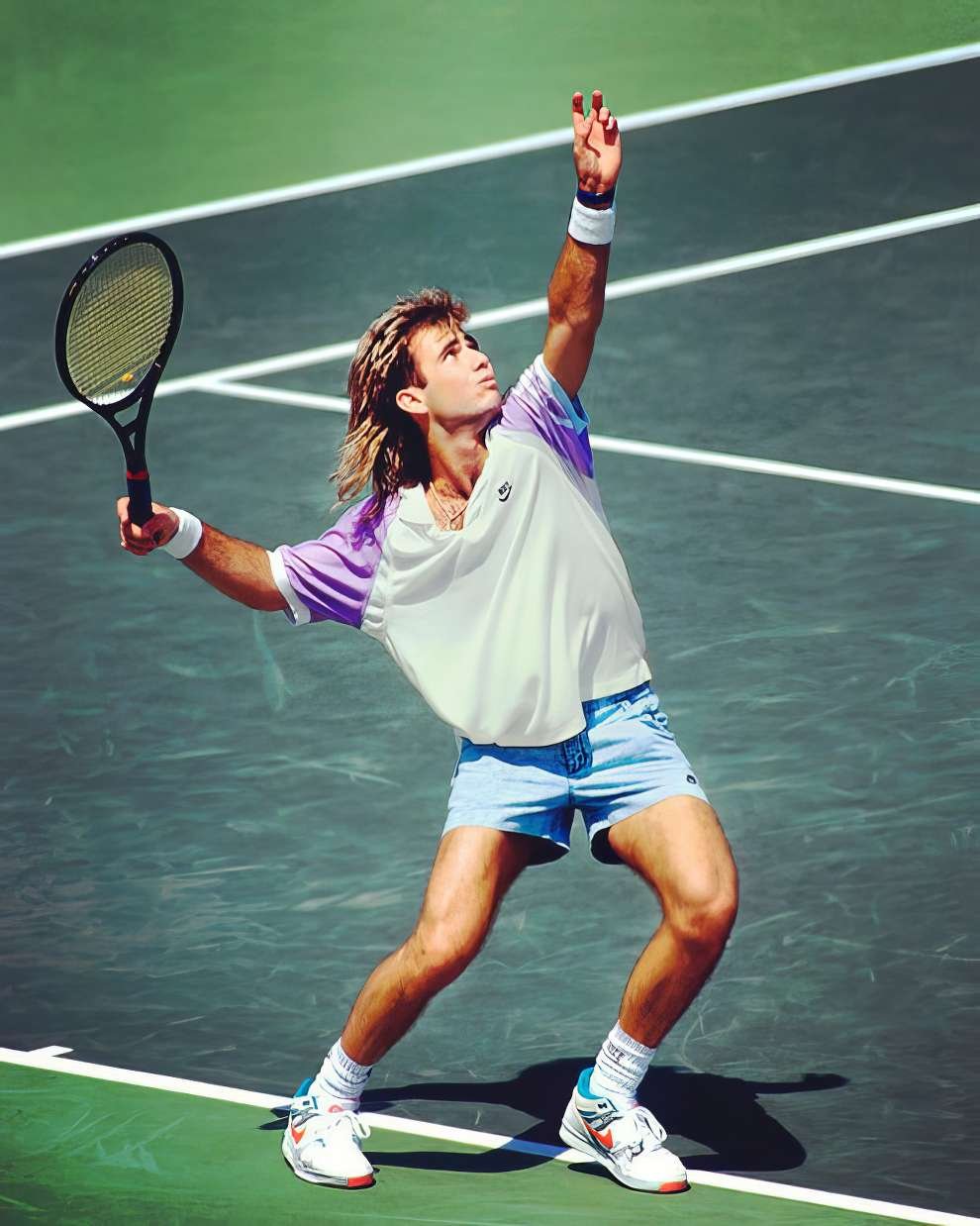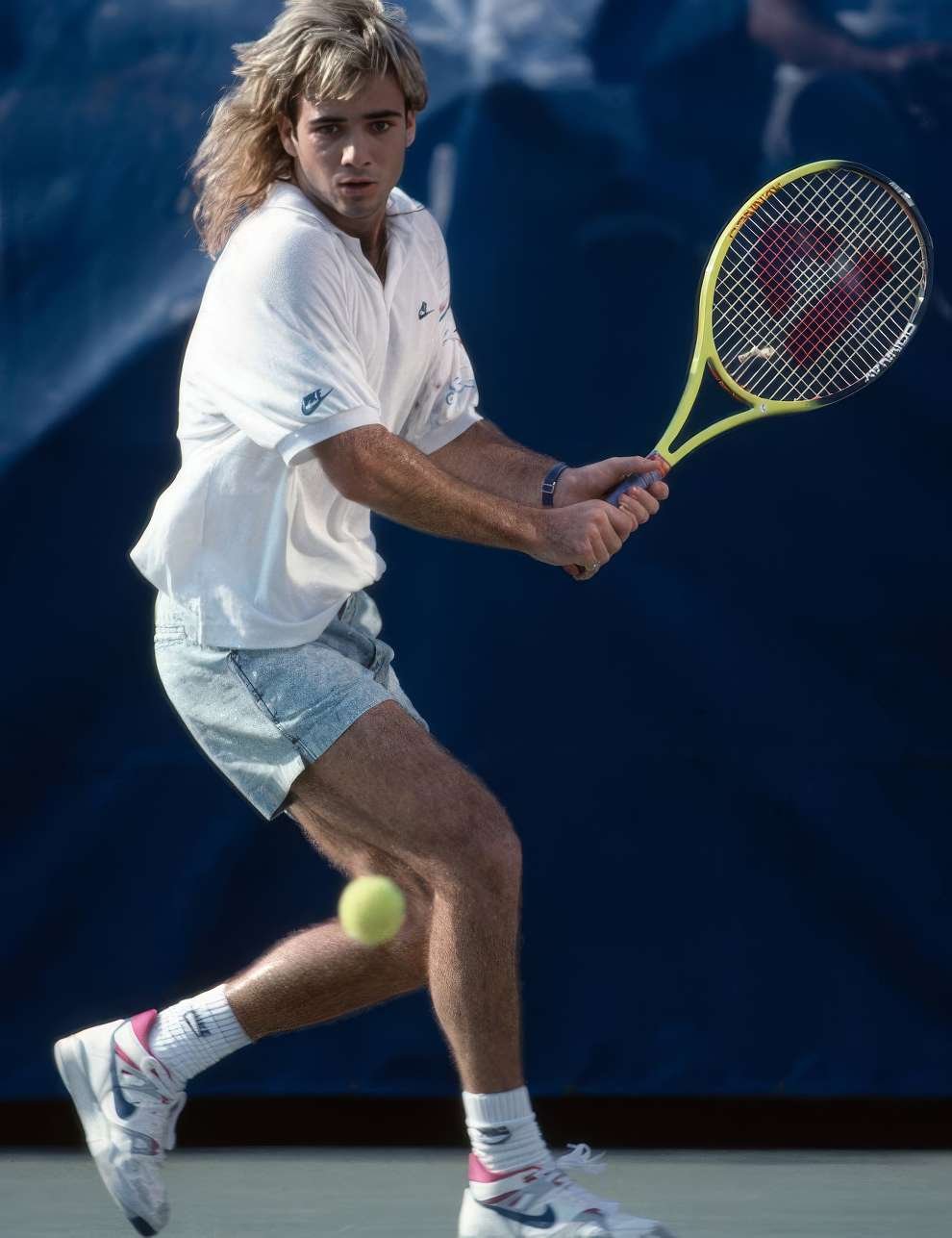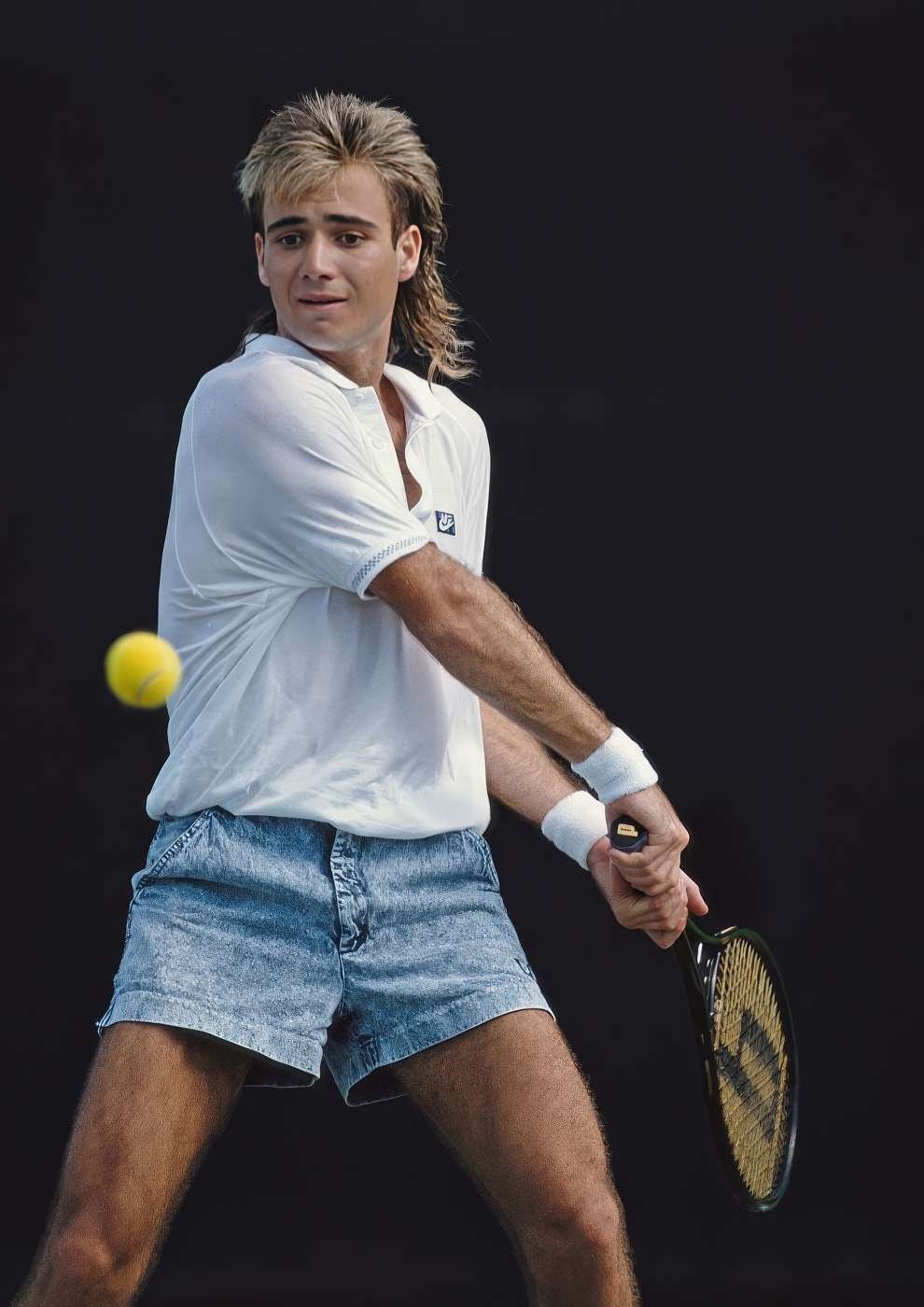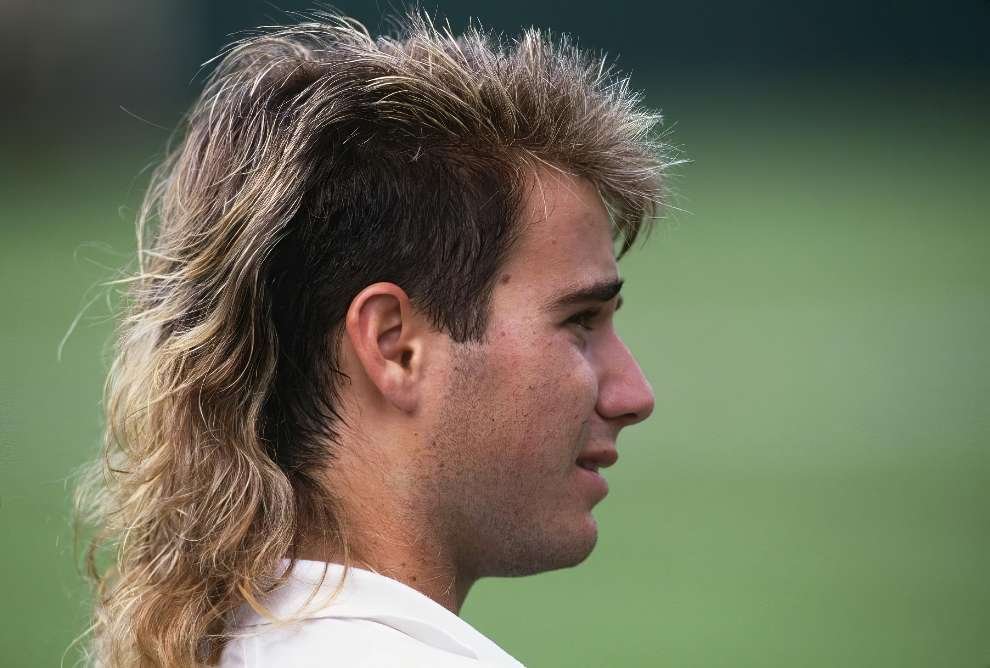
Andre Agassi is widely celebrated as one of the most illustrious tennis players in the history of the sport, boasting an impressive collection of eight Grand Slam titles and an Olympic gold medal in his illustrious career. His dominance was particularly evident in 1995 when he ascended to the pinnacle of world tennis, securing the No. 1 ranking for a substantial period of 30 weeks. Agassi’s prowess on the court was matched by his charisma and his unique ability to capture the imagination of tennis enthusiasts worldwide.
h/t: vintag.es

Beyond his exceptional skills with the racket, Andre Agassi became a cultural icon through his distinctive personal style, most notably characterized by his iconic mullet. Throughout the golden eras of the 1980s and 1990s, Agassi didn’t just play matches; he turned the tennis court into a vibrant stage for fashion innovation, profoundly influencing both his fellow players and legions of fans. His eye-catching outfits often included pieces from the Nike Challenge Court Selection, which were specifically inspired by his coordinated, colorful looks. These fashion statements made a significant impact on the aesthetics of tennis attire and left a lasting legacy in the world of sports fashion.

However, beneath the flamboyant exterior, Agassi was grappling with a personal challenge that contrasted sharply with his public persona. In his revealing 2009 memoir, “Open,” Agassi confessed to wearing a hairpiece during matches throughout the 1990s, starting notably from his first Grand Slam victory in 1990. This was a man famed for his luxuriant hair, yet, in reality, he was experiencing premature hair loss. Agassi lived in constant fear of public discovery, particularly anxious about how the media and his fans would react if they ever saw him without his famous hairdo. His concerns were not unfounded, as any alteration in his image might have affected his marketability and personal brand, which were closely tied to his distinctive style.

Agassi’s hair woes came to a head during a particularly poignant moment at the French Open, where he believed his loss was due, in part, to his worries about his hairpiece disintegrating during the play. This incident underscored how deeply his personal insecurities had affected his professional life. In his memoir, he shared the emotional toll of dealing with his hair loss, describing it as a daily erosion of his identity, a sentiment that many facing similar issues could relate to profoundly.
The turning point came in 1995, a pivotal year when Agassi decided to confront his fears head-on. In an act that he described as both terrifying and liberating, Agassi chose to shave his head completely, thus embracing his new reality. This bold move marked the beginning of a new chapter in his life and career. Returning to the court with a sleek, shaved head, Agassi continued to captivate audiences with not only his undiminished flair and skill but also with a new, raw authenticity that endeared him even more to the public.

In shedding his hair and the accompanying fears, Agassi demonstrated a remarkable resilience and an inspiring capacity to redefine his identity. His journey from hairpiece-dependent icon to a bald and bold tennis superstar left an indelible mark on the sport and on the cultural perceptions of beauty and strength. Agassi’s story is not just one of athletic prowess, but also of personal transformation and the relentless pursuit of authenticity, both on and off the tennis court.
